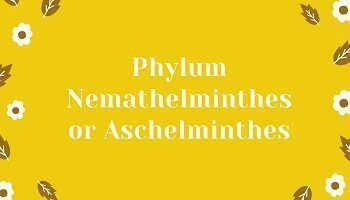Chromosomal Theory Of Inheritance:
After the discovery of microscope cytological studies were started and meiosis and mitosis were studied. Von Winiwarter (1901) reported that chromosomes are present in pairs in the ovary of half-day old rabbit. Montgomery (1901) studied meiosis in 42 species of insects. He reported that each association of chromosomes in pairs at Zygotene stage consists of one maternal chromosome and one paternal chromosome. This was based on the facts that one chromosome was small and the other long.
Withelm Roux suggested that the chromosomes look like string of beads and present in nuclei of the cells. The chromosomes duplicate during interphase and separate during meiosis at the time of gamete formation.
Walter Sutton (1902) and Theodor Boveri (1902) independently extended Montgomery’s observations and showed parallelism between the behaviour of chromosomes and Mendelian factors. There occurs a close similarity between the transmission of Mendel’s hypothetical factors and behaviour of chromosomes in reproduction. The chromosomes occur in homologous pairs which separate during meiosis-I and each gamete receives one chromosome of each homologous pair. These chromosomes from two different parents join together in the Zygote formation and thus, maintain the diploid number of chromosomes in the offspring. The chromosomes maintain their individuality, uniqueness throughout the life of an organism whether they are apparent or not.
Mendel’s findings held that hereditary factors also exist in pairs which segregate during gamete formation (law of segregation) and the paired condition is restored at random during fertilization. The Mendelian factors of each pair act independently of every other pair in their distribution into the gametes (law of independent assortment of genes). As the chromosomes get mixed up during zygote formation by the fusion of male and female gametes, Mendel held that paternal and maternal characters mix up in the progeny and form the hybrid. In the hybrid, a character is never lost when it is not expressed.
In 1903, Sutton and Boveri formulated a theory called a chromosomal theory of Inheritance. Its main features are-
- Each chromosome carries several specific determiners which play an essential role in the development of an organism. A loss of a complete chromosome or its fragment leads to deviation in the structure and function of an organism.
- The somatic cell of an organism bears two identical sets of chromosomes (diploid), each receiving from mother (maternal chromosome) and father (paternal chromosome). These chromosomes of one type constitute the homologous pair.
- The paired homologous chromosome gets separated during meiosis and each gamete receives one chromosome of each homologous chromosome.
- The paired condition of both chromosomes is maintained during fertilization.
- Each chromosome contain numerous genes and the position assigned to each gene is called locus. These genes help the organism to develop from the zygote.
- Each chromosome retains its individuality, uniqueness and continuity throughout the life of an organism and from generation to generation. They never get lost or mixed up but behave as units.
- Asexual Reproduction- Types, Characteristics And Significance
- Vegetative Propagation: Natural & Artificial Methods
- Parthenogenesis: Types And Significance
- Pollination: Types and Its Importance
- Differences Between Red And White Muscle Fibres
- Enzymes And Their Properties
- General Characters of Gymnosperms And Angiosperms
- Homeostasis: The Steady State – NIOS









Comments (No)